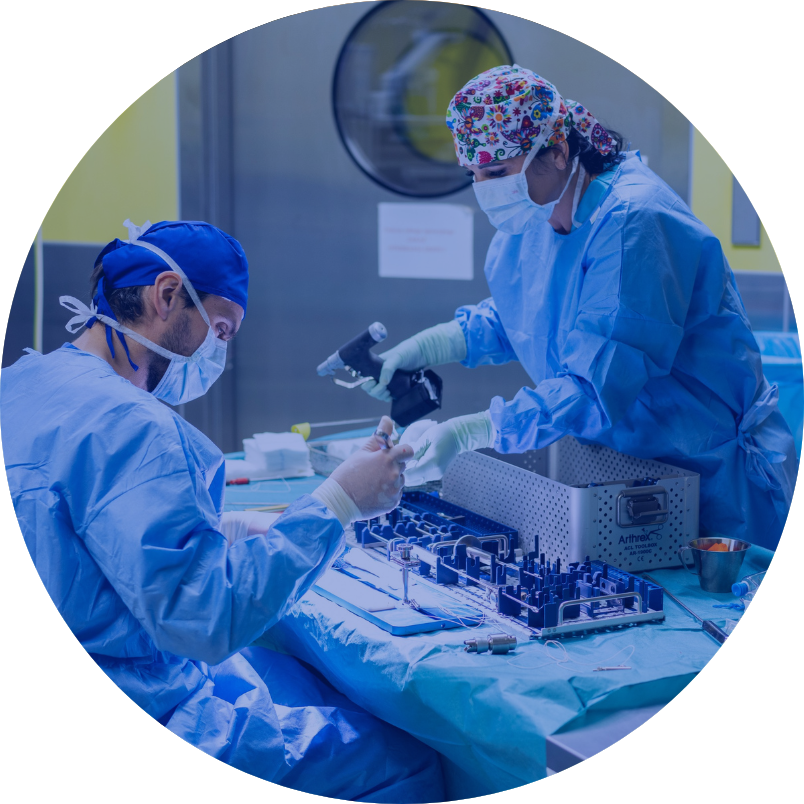Shoulder arthroscopy



OPERATIONS
Shoulder arthroscopy Hip endoprosthetics Bunion correction surgery Stem cells ACL reconstruction Knee endoprosthetics Brachial plexus reconstruction Treatment of traumatic peripheral nerve injuries in the extremities Surgical treatment of neoplastic and tumour-like lesions of the peripheral nerves and brachial plexus High density platelet-rich plasma Carpal Tunel release procedure Knee Arthroscopy Hip ArthroscopyOPERATIONS
Thanks to shoulder arthroscopy the treatment of pain in the shoulder has become more patient-friendly. Low invasiveness of the procedure and tissue saving “on the way” to a joint related thereto resulted in a drastic decrease in number of complications and shortened recovery time. It is worth emphasizing that endoscopic treatment allows for more precise performance and thus playing sports at the same level as previously – which was not often provided by “open” surgery. Shoulder arthroscopy is a healing procedure and the modern diagnostics virtually eliminated so-called diagnostic arthroscopy.
In the diagnostics the following is of crucial importance:
• detailed history
• clinical examination
• diagnostic imaging: x-ray, magnetic resonance imaging (MRI) and computed tomography (CT)
Shoulder arthroscopy covers a wide scope of procedures and diseases which may be treated effectively.
Main of them are:
– instability of glenohumeral and scapular joint,
– recurrent shoulder dislocation,
– damages to rotator cuff,
– damages to tendon of the long head of the biceps,
– SLAP,
– bursitis,
– impingement syndrome,
– ACJ acromioclavicular joint dislocation (damages to coracoclavicular ligament),
– degenerative changes in acromioclavicular joint,
– calcification of rotaror cuff,
– glenohumeral and scapular joint arthrosis,
Pain in the shoulder is the most frequent symptom from the locomotor system that is reported to an orthopaedist and concerns people at every age. Dysfunction caused by the pain may influence on the life quality of patients and may make the normal functioning difficult, including performance of everyday activities.
Causes of the above-mentioned abnormalities are a wide scope of injuries and overloading due to sports, including amateur performance thereof, sudden lifting heavy load or long-lasting stillness as well as improper body posture and sedentary lifestyle which impair arms muscles.
Shoulder arthroscopy is performed under general anaesthesia. Additionally brachial plexus block may be applied. The treatment is performed with the use of endoscopic vision set. In our clinic, a patient is in sitting position during the treatment. A surgeon makes few minor incisions of the skin under the shoulder, while arthroscopic optics and a repair tool are put inside the joint.
Rehabilitation is started on the next day after the operation. Operation follow-up is determined individually depending on the repair type. Usually it is recommend to immobilize in orthesis for 6 weeks. During this period, we recommend to perform gentle exercises, it is allowable to take orthesis off for toilette or exercises, however it is crucial to be immobilized in the orthesis while sleeping as it makes uncontrolled limb movement impossible. During the rehabilitation period which lasts approximately 6 (2-9) months, we pay attention to proper muscle building, stretching, rolling and manual therapy, particularly to exercises which lower head of the humerus.
Recommendations before the procedure:
Shoulder arthroscopy is performed in patients of different ages. It is one of medium treatments. Due to the sitting position (beach chair) during the procedure, it is necessary to maintain low blood pressure and thus it is necessary to consult with a general practitioner in case of patients at older age or with chronic illnesses predispositions, particularly cardio-vascular diseases. In order to prepare for the arthroscopic procedures, it is necessary to make laboratory tests and mark blood type. All tests may be performed directly before the procedure, however if they are performed in advance, they may increase a probability of performance thereof. A detailed list of necessary and recommended tests before the arthroscopic procedure will be provided during the consultation.
Recommendations after the surgery:
• Dressing changes every 2 days and removal of itches on 10th-14th day after the procedure
• Improving exercises in accordance with the schedule introduced by a hospital physiotherapist
• Immobilization of the limb in orthosis for the period indicated in the information sheet
• Use of stocking and compression therapy
• Application of analgesics

